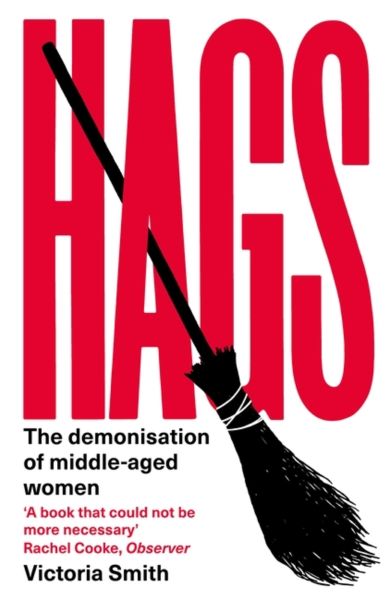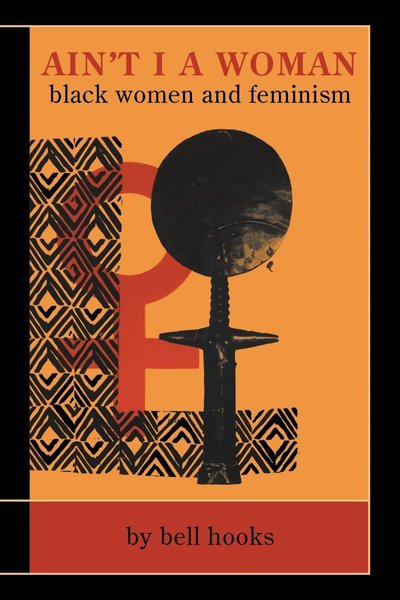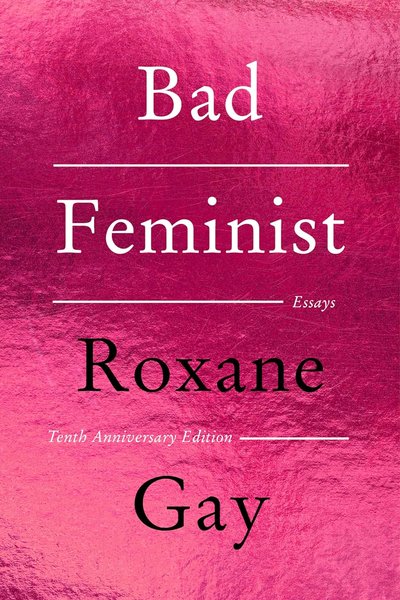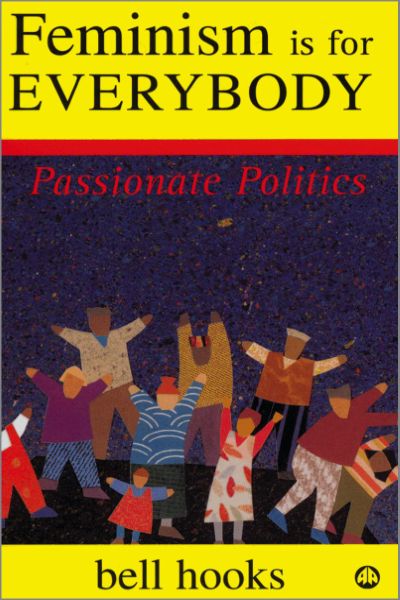Hags: The Demonisation of Middle-Aged Women
A sharp work by feminist writer Glosswitch exploring why women in their forties and beyond seem to enrage almost everyone. In an era of identity politics, middle-aged women are portrayed as bigoted, entitled, and morally inferior. Smith traces history to reveal why this specific form of misogyny is so rampant today. Shortlisted for the 2023 Nero Book Awards.

📝 Book Review
What is it about women in their forties and beyond that seems to enrage—almost everyone? In the last few years, as identity politics have taken hold, middle-aged women have found themselves talked and written about as morally inferior beings: the face of bigotry, entitlement and selfishness, to be ignored, pitied or abused. In “Hags,” Victoria Smith asks why these women are treated with such active disdain. Each chapter takes a different theme—care work, beauty, violence, political organization, sex—and explores it in relation to middle-aged women’s beliefs, bodies, histories and choices. Smith traces the attitudes she describes through history and explores the very specific reasons why this type of misogyny is so very now. The result is a book that is absorbing, insightful, witty and bang on time.
Victoria Smith, writing under the pen name Glosswitch, is a British feminist writer and commentator with a PhD in German literature, particularly interested in Romanticism and dark fairy tales. She created the widely-read feminist newsletter “The OK Karen,” focusing on middle-aged women’s feminist experiences. Her writing regularly appears in The Critic magazine, exploring women’s issues, parenting and mental health, while also contributing to The New Statesman, The Independent, UnHerd and other outlets. Her debut book “Hags” was shortlisted for the 2023 Nero Book Awards, and her second book “Unkind” examines how “be kind” discourse entrenches sexism, published in February 2025. Smith lives in Cheltenham, and her Twitter account @glosswitch is known for sharp feminist commentary.
The word “hag” itself is both a curse and historical witness. In medieval and early modern Europe, older women—especially those who were independent, opinionated, possessed traditional knowledge (like midwifery, herbal medicine)—were frequently accused of witchcraft and persecuted. “Hag” is patriarchy’s stigmatizing label for non-compliant older women—no longer young and beautiful, no longer reproductively valuable, thus losing their “usefulness” in male-dominated society, becoming objects to be mocked, feared and eliminated. Smith reclaims this pejorative term, using it as a lens to analyze contemporary misogyny, revealing that the special form of oppression facing middle-aged women is not new but a modern replay of ancient patterns.
Smith’s core argument is: in contemporary identity politics and progressive discourse, middle-aged women, especially white middle-class middle-aged women, are constructed as the root of all evil—they are “Karens,” embodiments of racism; they are “TERFs” (trans-exclusionary radical feminists), the greatest obstacle to transgender rights; they are “white feminists,” enemies of intersectional feminism; they are the privileged establishment, reactionary forces blocking progress. This demonization comes not from conservatives or obvious misogynists but from self-proclaimed progressive, left-wing, even feminist groups. This makes it more insidious, harder to refute, and more damaging.
In the chapter on care work, Smith analyzes a brutal paradox: middle-aged women are often pillars of family and social care systems—they care for children, aging parents, sick spouses, dominate low-paid care professions like nursing and education—yet this labor is taken for granted while they themselves are deemed lacking in empathy and caring capacity. The “Karen” stereotype embodies this contradiction: a middle-aged white woman portrayed as selfish, demanding, entitled, always “asking for the manager.” But Smith points out this stigmatizing image obscures reality: many so-called “Karen” behaviors—advocating for children’s rights, complaining about poor service, maintaining safety in public spaces—are actually women’s efforts to secure basic respect for themselves and others within structural inequality.
More insidiously, mockery of “Karens” makes women’s legitimate concerns inexpressible. If a woman complains about sexual harassment, racial discrimination or any injustice, she may be labeled a “Karen,” thus delegitimizing her complaint. This mechanism particularly effectively silences middle-aged women because they’re already culturally marginalized, lacking the social capital that “desirability” grants younger women and the exemption that “harmless grandmother” status provides older women. Middle-aged women occupy the lowest point of visibility; their voices are easiest to ignore, their concerns easiest to mock.
In the chapter on beauty, Smith explores middle-aged women’s complex relationship with aging bodies. In a culture equating women’s value with youth and beauty, aging is an existential crisis for women. Wrinkles, gray hair, weight gain, sagging skin—these natural aging signs are viewed as failure in women, requiring hiding, correction or shame. The beauty industry, plastic surgery, “anti-aging” industry all build on women’s fear of aging. Middle-aged women face impossible choices: if they try to maintain youthful appearance (dyeing hair, makeup, cosmetic surgery), they’re mocked as vain, desperate, “mutton dressed as lamb”; if they accept natural aging, they’re deemed to have “let themselves go,” no longer worth seeing or desiring.
But Smith points out this isn’t merely about personal choice or self-esteem but structural. Fear and revulsion toward women’s aging is deeply embedded in patriarchal capitalism. Women’s value closely links to sexual attractiveness and reproductive capacity; once these are deemed gone, women become “useless.” This explains why middle-aged women’s visibility is so low—they no longer fit as objects of gaze, thus can be culturally “disappeared.” Simultaneously, this invisibility is double-edged: both oppression (being ignored, marginalized) and potential liberation (freed from male gaze tyranny, no longer needing to please). Smith acknowledges this paradox but refuses to romanticize it—invisibility shouldn’t be something women must “enjoy” but an injustice requiring challenge.
The chapter on violence is among the book’s most disturbing. Smith documents special forms of violence and threats against middle-aged women, especially online. When middle-aged women, particularly those daring to express feminist views, speak up on social media, they face massive hate, threats and harassment. These attacks often carry dual dimensions of gender and age: they’re called “ugly old bitches,” “expired women,” “old hags who should be raped.” Attackers, including some self-proclaimed progressives or feminists, seem to believe middle-aged women don’t deserve basic respect or safety, their views can be violently silenced, their bodies can be imaginatively violated without triggering moral outrage.
Worse, when these women report abuse they face, they’re often not taken seriously. Police, platforms, even some feminist groups may ignore or minimize threats against middle-aged women, viewing them as “online squabbles” rather than genuine violence threats. This is partly because middle-aged women’s lives and safety rank low in cultural value hierarchies, partly because if these women have expressed unpopular views (like questioning gender identity politics), they’re deemed to “deserve” attacks. Smith sharply notes this tolerance and justification of violence against certain women reveals deep misogyny in progressive politics—if you’re not the “right type” of woman, your safety doesn’t matter.
In the chapter on political organization, Smith analyzes middle-aged women’s marginalization in feminist movements and left politics. Though middle-aged women are often backbones of grassroots organizing—they have time, experience, skills and networks—their contributions are frequently overlooked or devalued. In many progressive spaces, there’s worship of youth, diversity, “coolness,” while middle-aged women, especially white middle-class ones, are viewed as outdated, conservative, blocking innovation. They may be allowed to do unpaid organizational work but not lead, not represent the movement’s “face.”
Smith also explores how intersectionality theory in practice is sometimes used to marginalize certain women. While intersectionality as analytical tool is important and necessary, recognizing different forms of oppression interweave, in some contexts it’s reduced to an oppression hierarchy where people with certain identities (white, middle-class, cisgender, heterosexual) are automatically viewed as oppressors rather than potential allies or co-oppressed. Middle-aged white women occupy an awkward position in this hierarchy: as women, they face gender oppression; but as (potentially) white, middle-class, cisgender, they’re viewed as privileged. This complexity is often reduced to: their privilege outweighs their oppression, thus their feminist concerns don’t matter, are even suspect.
Smith doesn’t deny privilege’s existence or intersectional analysis’s importance, but she questions how this analysis is weaponized to silence certain women. She notes middle-aged women, even white and middle-class ones, still live under patriarchy, still face sexism, sexual violence threats, economic inequality (gender wage gap widens with age), care burdens. Simply categorizing them as “privileged” while ignoring their specific oppression experiences is simplification and injustice. More importantly, this practice divides women, preventing solidarity based on shared experiences.
The chapter on sex is perhaps most controversial, as Smith directly touches transgender debates. She documents how some middle-aged women, especially those questioning self-ID theory (i.e., “anyone who identifies as a woman is a woman”), are labeled “TERFs” and attacked. Smith herself holds what’s called a “gender critical” position—she believes biological sex is important material reality, women as a category based on biological sex have specific rights and needs. This position is extremely controversial in contemporary progressive politics, often leading to harsh condemnation and deplatforming.
Smith’s argument is that regardless of one’s position on transgender issues, the special hatred and violence middle-aged women face for expressing concerns about these issues is itself a manifestation of misogyny. She notes that when middle-aged women discuss sex-based rights (like single-sex spaces, women’s sports), they’re portrayed as bigoted, hateful, “outdated old hags,” while younger women or men expressing similar views face less extreme reactions. This suggests attacks on these women aren’t just about their views but about who’s allowed to have views—middle-aged women, as one of culture’s least valued groups, are deemed to have no right to participate in these debates.
Smith particularly focuses on how the “TERF” label is used. Though originally referring to “trans-exclusionary radical feminists,” in practice it’s become a broad stigmatizing label applicable to any woman questioning some aspects of transgender movement, regardless of how nuanced their actual views or whether they’re actually “radical feminists.” More importantly, women labeled this way often become targets of violence threats and social exclusion, their views deemed unworthy of debate, themselves deemed unworthy of humane treatment. Smith argues this dehumanization has direct continuity with historical demonization of “hags”—certain women are constructed as evil, dangerous, thus can be attacked without triggering moral concern.
Smith doesn’t ask readers to agree with all her positions on transgender issues, but she asks us to recognize that the special hatred toward middle-aged women holding these positions is itself a problem requiring understanding as intersection of misogyny and ageism. She also notes many attacked women—including lesbian feminists, survivors of sexual violence, long-committed women’s rights activists—have their own vulnerabilities and marginalization experiences; simply portraying them as “privileged oppressors” distorts their lived realities.
A major theme throughout is generational conflict’s manifestation in feminism. Smith observes many attacks on middle-aged women come from younger generations, especially young feminists. This partly reflects natural generational tension—youth always need to distinguish from predecessors’ ideas, establish own identities. But Smith argues in feminism, this tension is specially weaponized. Young feminists sometimes portray previous generation feminists as outdated, conservative, “got it wrong,” needing to be surpassed or even discarded. This attitude partly reflects a distorted mirror of patriarchy—just as patriarchy teaches us older women have no value, young feminists sometimes internalize this value, opposing their “new” and “progressive” to previous generation’s “old” and “reactionary.”
But Smith notes this antagonism is self-destructive. Feminist movements need generational continuity and knowledge transmission. Previous generation feminists’ experiences and insights—even if we disagree with all their conclusions—are precious resources. Simply rejecting them as “bad examples” is not only unjust but deprives the movement of historical memory and strategic wisdom. More importantly, when young feminists today mock and attack middle-aged feminists, they’re setting traps for their own futures—because they too will age, will become objects the next generation views as “outdated” and “reactionary.” One of misogyny’s cunning aspects is making women oppose each other rather than unite against common oppression.
Smith’s writing style is a major strength. She has scholar’s rigor and depth, activist’s passion and urgency, commentator’s wit and satire. She can connect complex theoretical concepts with concrete everyday experiences, making the book both intellectually deep and emotionally resonant. She doesn’t avoid difficult or controversial topics, but her handling is nuanced and fair, acknowledging complexity and ambiguity even when expressing strong views. Her humor isn’t frivolous but a strategy for coping with absurdity and pain—when reality is too depressing, mocking it may be the way to stay sane.
The book’s timeliness is undeniable. In the early 2020s, many Western countries experienced intense “culture wars,” where divisions within feminism—especially around transgender rights, sex work, surrogacy—became extremely polarized. Middle-aged women, especially those viewed as “gender critical,” became particular attack targets. Simultaneously, social media dynamics intensified this conflict, reducing nuanced debate to labels and abuse, demonizing rather than understanding those with different views. Smith’s book is an intervention in this dynamic, attempting to restore nuance, empathy and historical awareness.
“Hags” was shortlisted for the 2023 Nero Book Awards, recognition reflecting the book’s literary and intellectual quality and the importance of issues it touches. The Nero Book Awards focus on works that “expand fiction’s boundaries”; though “Hags” is nonfiction, it innovatively blends personal narrative, social commentary, historical analysis and theoretical reflection, indeed pushing nonfiction writing’s boundaries.
For Chinese readers, this book provides a window into current Western feminist debates while having universal relevance. Though specific political and cultural contexts differ, devaluation and marginalization of middle-aged women is a cross-cultural phenomenon. In China, “leftover women” discourse’s stigmatization of unmarried women, “dama” as a pejorative for middle-aged women, anxiety and fear about women’s aging all reflect similar misogyny and ageism. Smith’s analytical framework—understanding contempt for middle-aged women as intersection of patriarchy, capitalism and ageism—can help us understand these phenomena.
Simultaneously, this book reminds us to notice power dynamics and exclusion mechanisms within feminist movements. In any movement, there are questions of whose voices are heard, whose concerns prioritized, who’s viewed as “real” members. Smith calls us to remain vigilant, avoid reproducing oppression patterns we seek to oppose. She reminds us feminism should be inclusive, intergenerational, based on shared experiences and solidarity, not exclusive, hierarchical, based on who’s “more correct” or “more progressive.”
Ultimately, “Hags” is a book about respect and visibility. Smith demands basic respect and recognition for middle-aged women—among culture’s most easily overlooked, mocked, demonized groups. She refuses to accept that middle-aged women should gracefully exit public life, stop having opinions, stop taking up space. She insists middle-aged women’s experiences, knowledge and concerns are valuable, worthy of being heard and taken seriously. She reclaims the pejorative “hag” label, transforming it into a symbol of power and resistance—if speaking truth, refusing compliance, insisting on boundaries makes her a “hag,” then she proudly accepts this identity.
This book is solidarity with all middle-aged women, telling them: your anger is justified, your voice matters, you shouldn’t be silenced or marginalized because of age. It’s also a warning to young women and all feminists: if we allow some women to be demonized because of age, we strengthen patriarchy’s logic; if we can’t build cross-generational solidarity, our movement will be weakened. Finally, it’s a reminder to everyone: misogyny has many forms, including those dressed in progressive clothing, and we need constant vigilance to identify and oppose it wherever it appears.
Victoria Smith has written this work with courage, wisdom and sharp wit, providing a crucial voice to contemporary feminist debates. “Hags” is essential reading for anyone concerned with women’s rights, social justice, generational relations or simply human dignity. It’s both indictment and invitation—indictment of systematic devaluation of middle-aged women, invitation to imagine a world where women of all ages are respected and valued. In a culture trying to disappear certain women, this book is a powerful declaration: we are here, we will not be silent, we refuse to be demonized.
Book Info
Related Topics
🛒 Get This Book
 Buy on Amazon
Buy on Amazon Related Books
Book Discussion
Share your thoughts and opinions on this book and exchange insights with other readers
Join the Discussion
Share your thoughts and opinions on this book and exchange insights with other readers
Loading comments...


